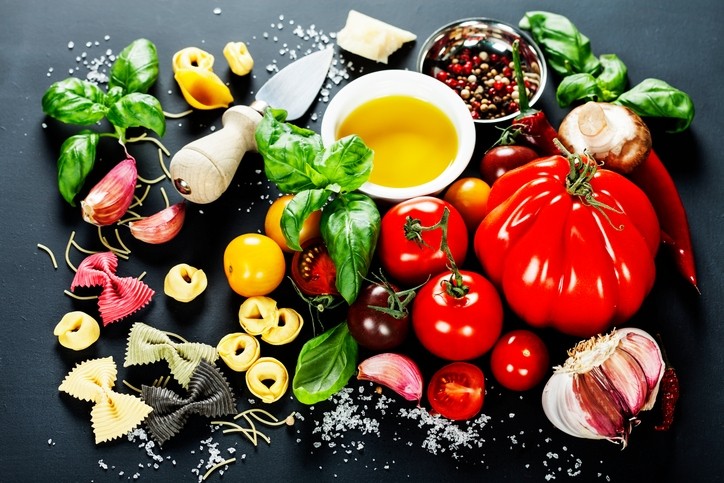Smells like teen spirit? Different age groups have specific food smells - and that's important for tailored NPD

If consumers intuitively assign certain food odours with different life stages, that's important for food manufacturers looking to develop new products for specific consumer groups.
This was the hypothesis put forward by a group of Austrian researchers – and their theory, it turns out, holds water.
Out of seven odours given to almost 400 volunteers - lemon, vanilla, lily of the valley, clove, candy, cucumber and roasted peanut - six were “significantly assigned” to a specific life stage.
The majority of participants across all ages associated confectionery and vanilla smells with children; floral and spicy-brown with adults and green-cucumber and nutty to elderly people.
Contrary to Kurt Cobain's lyrics, the researchers discovered that teen spirit does not in fact have a specific smell - adolescents were the only group that lacked a clearly associated odour.
What’s more individuals who disliked a specific odour tended to assign it to seniors – a finding which may seem slightly offensive to older people, say the scientists, but which may stem from our own emotional connotations.
While childhood and youth tend to be associated with positive feelings like optimism and health, old age is linked with depression, illness and death.
A deeper understanding for product design
Lead researcher Klaus Dürrschmid from the University of Natural Resources and Life Sciences in Vienna said this is the first study into the links between smells and life stages, and more work is needed to fully understand the topic. But even at this early stage, the findings are interesting for food industry.
“Products designed for specific age groups are getting more and more important. A deeper understanding about odour and age associations can allow product developers to tailor products specific to age groups or purpose,” he told FoodNavigator.
“A deeper knowledge about the conceptualisation of odours allows also to design products which fit much better into certain situations and consumption purposes.”
In order for these kinds of implicit flavour associations to be successful, however, the product must have an overall ‘coherence’.
“It’s crucial that extrinsic characteristics - packaging, labels, advertising and association clouds - match with the intrinsic (sensory) characteristics of the products. Understanding consumer’s associations with odours can help to improve this match and therefore potentially improve market performance,” Dürrschmid said.
Vanilla and kids, chicken or egg?
So do manufacturers flavour children’s food with vanilla because this is a ‘natural’ association, or is the opposite in fact true – that people associate vanilla with youthfulness because it is commonly used in kids’ food?
It’s difficult to say, said Dürrschmid. “However, it is well known that human milk has vanilla notes, which new-borns learn to love by the ‘liking by tasting’ effect,” he added. “In my opinion, vanilla is therefore used in kid's food, but of course the use in kid's food has a reinforcing effect on the liking of vanilla.
“For instance, it could be shown in the Netherlands that individuals who grew up with vanilla-added milk products, show a clear preference for vanilla added tomato ketchup in their later life times.”
So who smells like what… and why?
Where do these age-smell associations come from? The researchers, among whom are members of the European Sensory Network, have some interesting theories:
“Flowers are often associated with reproduction and sexuality and may be why they are connected more closely to the adults’ group,” they write.
“Spicy-brown is the flavour of ripeness and full development, which in terms of periods of life might be seen closer to adults than to other life stages.
“The nutty and green flavours were associated with seniors. Nuts are fruits of the autumn and the surface of a nut is often – in analogy to the faces of old humans – very wrinkled.
“Green is a harvest smell and perhaps the smell produced by elderly people cutting the lawn of their garden.
“It is also well known that vegetables belong to children’s least accepted food category, an aversion which could explain why green odour is associated with seniors and not children.”
The study
In collaboration with global flavour house Symrise, which provided the smell solutions, the scientists selected seven flavours from distinct flavour 'families' all of which are authorised for use in all food categories in the EU: fruity-citrus (lemon oil), vanilla (vanillin), lily of the valley floral (linalool), spicy-brown clove (eugenol), confectionery (isoamyl acetate), green cucumber (E,Z)-nona-2,6-dienal) and nutty roasted peanut (2-methoxy-3-methyl pyrazine).
A total of 397 individuals took part (76 children, 103 adolescents, 163 adults and 55 seniors) who, after smelling the different odours completed a questionnaire to determine their associations, liking and familiarity.
Source: Food Quality and Preference
“Smells like teen spirit: Associations between odours and stages of life – A preliminary study”
Published online ahead of print, July 2017,http://doi.org/10.1016/j.foodqual.2017.02.016
Authors: Klaus Duerrschmid, Lukas Danner, Martin Wendelin, Elisabeth Buchinger et al.








